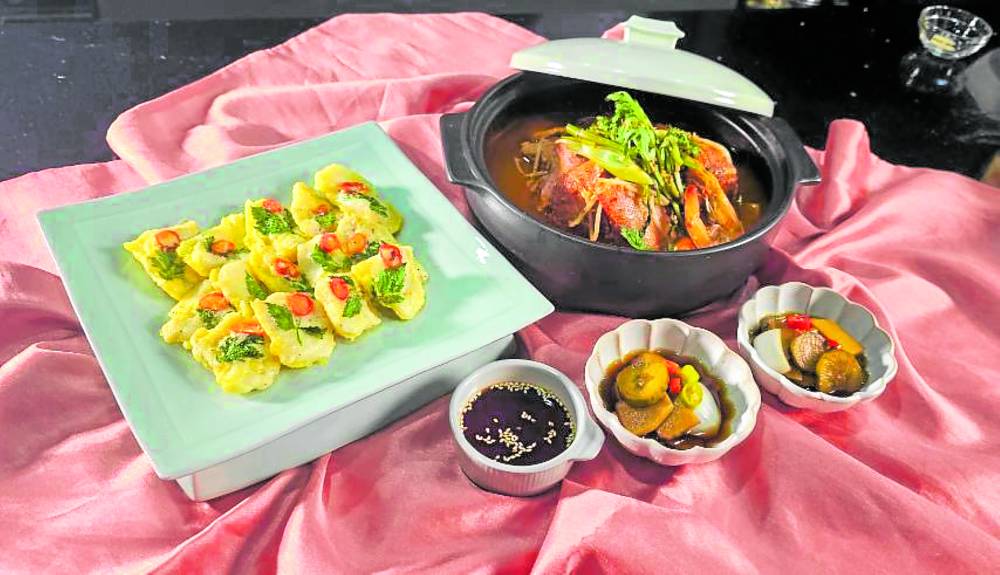Korean cuisine has captured the hearts and taste buds of many, thanks to the global phenomenon of K-pop. As we become more familiar with Korean culture, we also develop a deeper appreciation for their customs, traditions, and of course, their cuisine. Chef Lily Min, who has been residing in the Philippines since 2004, is a passionate advocate for Korean culture and cuisine. As the resident chef of the Korean Cultural Center (KCC), she not only teaches Korean cookery but also strives to introduce lesser-known dishes to the Filipino community. Beyond the popular dishes like japchae, galbi, bulgogi, and tteokbokki, there is so much more to discover.
I have had the pleasure of knowing Lily since September 2018, when I covered a story on Chuseok (Korean Thanksgiving). Ever since then, we’ve been inseparable “Seoul sisters”, bonding over meals, travels, and our collaboration on the bestselling “K-Drama Cookbook”. Lily has been my go-to resource for understanding the principles of Korean cuisine and gaining a deeper appreciation for it. She has taught me about the concept of obangsaek, which revolves around the five directions (east, west, north, south, and center) and five colors (blue, white, black, red, and yellow) in Korean cuisine. Each direction is associated with a specific color, representing harmony with nature, health, and prosperity. In Korean royal cuisine, great emphasis is placed on creating nutritious meals that incorporate the five colors associated with different organs in the body.
Lily’s dedication to promoting healthy eating extends to her use of local ingredients in her Korean dishes. Recently, she showcased her latest creations at an event at the KCC, featuring Pinoy ingredients fused with Korean flavors. One of her favorites is sayote, which she uses in various ways, from root to fruit! She hopes that more people will be inspired to try cooking these dishes at home.
One of her featured dishes is the “Maewuntang”, a spicy lapu-lapu stew. This stew is made with lapu-lapu, shrimp, radish, bean sprouts, water parsley, green onion, red and green chilis, mirim (or soju), and anchovy broth (or water). The seasoning includes chili powder, chili paste, anchovy sauce, garlic, ginger, black pepper, salt, and water. The lapu-lapu is first prepared by removing the guts, scales, and fins, then cut into pieces and rinsed. The radish is cut into bite-sized pieces, and the chilis are sliced diagonally. All the ingredients are combined in a pot with the broth and seasonings, then cooked until the radish is soft. The fish, shrimp, bean sprouts, mirim, water parsley, green onion, and chilis are added later, and the stew is ready to be enjoyed.
Another delightful dish that Lily shared is the “Lapu-lapu Jeon”, or lapu-lapu pancake. This pancake is made with lapu-lapu fillet, flour, eggs, salt, pepper, and cooking oil. The dipping sauce is made with soy sauce, vinegar, sugar, and sesame seeds. Optional garnishes include dried red chili and crown daisy. The lapu-lapu fillet is rinsed, dried, and seasoned with salt and pepper. It is then dredged in flour and dipped in beaten eggs. The fish fillet is pan-fried until golden brown, and served with crown daisies and red chili on top. The dipping sauce adds a tangy and savory element to the pancake.
Last but not least, Lily prepared a delightful “Sayote Jangajji”, or sayote pickle. This dish is made with sayote, onion, cucumber, siling labuyo, green chili, soy sauce, vinegar, sugar, and anchovy stock (or water). The sayote is peeled and cut into bite-sized pieces, while the onion and cucumber are also cut into bite-sized pieces. The chilies are sliced, and all the vegetables are boiled together until the sugar dissolves. The pickled sayote is then stored in an airtight container once it has cooled down.
These three dishes showcase the versatility of Korean cuisine and how it can be adapted to local ingredients. Lily’s passion for sharing Korean culture and cuisine is evident in every dish she creates. As we continue to explore and appreciate Korean cuisine, let’s not forget to support and celebrate the chefs and culinary experts who bring these flavors to our tables.
Denial of responsibility! Vigour Times is an automatic aggregator of Global media. In each content, the hyperlink to the primary source is specified. All trademarks belong to their rightful owners, and all materials to their authors. For any complaint, please reach us at – [email protected]. We will take necessary action within 24 hours.


